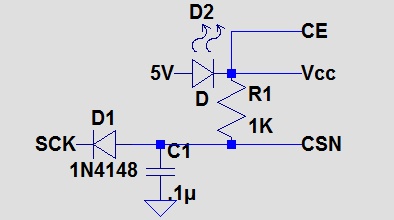Revised dual power supply boards are back in stock
We have added a 500mA PTC fuse to our dual (5.0V/3.3V) power supply regular board in the new version. This power supply regulator board provides constant 3.3V and 5.0V outputs from an unregulated DC input (6.5-10V). The DC outputs are accessible through a 3-pin terminal block. It is small in size (1.9″X1.0″) and can be easily enclosed inside a project box along with the project circuit board. The board doesn’t have any ON/OFF switch, because it may not be useful if this board is enclosed inside the project box. We have included two through-hole pads on the board if you want
Read more


